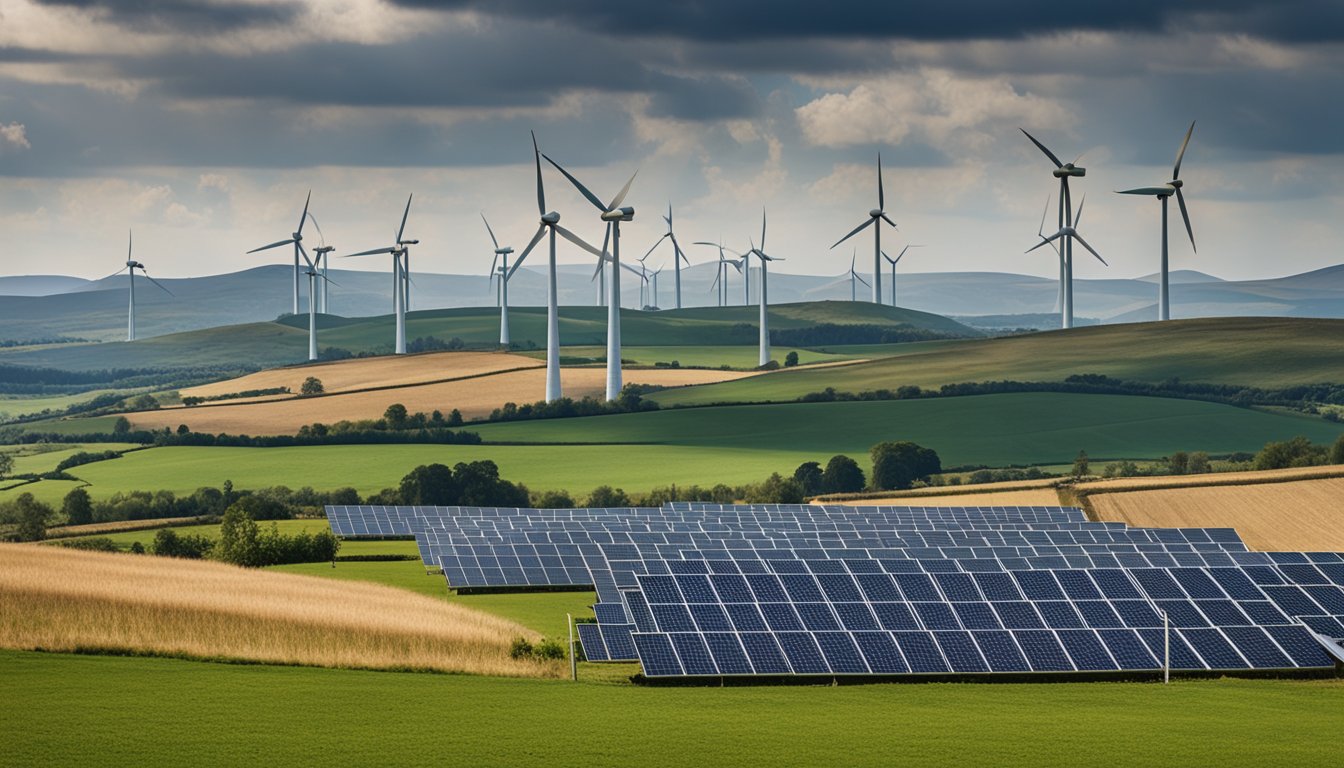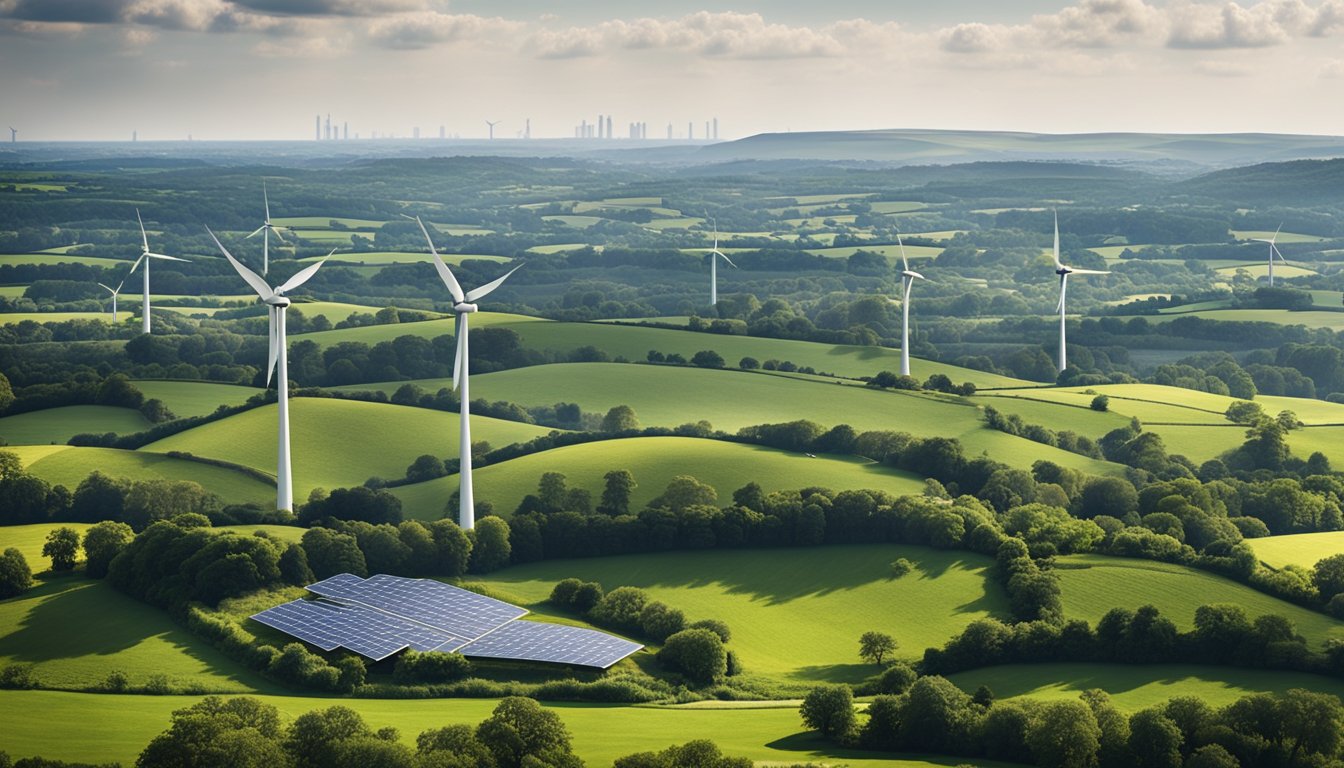Late updated: 18 Nov 2024 11:11
Written by: Eleanor Hartman
Comparing Renewable Energy Sources in the UK: An Analysis of Options and Impacts
Renewable energy is rapidly shaping the future of electricity generation in the United Kingdom. Over recent years, there's been a notable surge in the adoption of sustainable energy sources, drastically shifting our collective energy landscape. As of 2023, renewable sources accounted for approximately 39.5% of the UK's energy, signifying an impressive transition from fossil fuels. This shift is not only vital for reducing greenhouse gas emissions but also for achieving net zero goals, promising a cleaner and more sustainable future.

In the UK, wind, solar, hydroelectric, and bioenergy stand out as the main pillars of renewable energy. Each source has its unique benefits and challenges, influencing their role in energy generation. Wind power, particularly offshore, has emerged as a dominant player, harnessing our nation's natural weather patterns to produce significant electricity. On the other hand, solar power capitalises on the sun's energy, contributing steadily to the energy mix.
Our exploration of these energy sources will provide insights into their efficiency, environmental impact, and potential for future growth. By drawing comparisons between these sources, we hope to understand how the UK can optimise its renewable portfolio and sustain its path toward a greener economy.
Key Takeaways
- Renewable energy significantly contributes to the UK's energy generation.
- Wind, solar, hydroelectric, and bioenergy are key renewable sources in the UK.
- Understanding each source helps in strategising for a greener future.
Renewable Energy Overview in the UK
The United Kingdom is making significant strides in the renewable energy sector, with a notable shift towards sustainable energy solutions. Our focus will be on the historical context, types of renewables, and their impact on carbon emissions.
Historical Development and Policies
Renewable energy in the UK has evolved significantly over the decades, influenced by various governmental policies and initiatives. The Contracts for Difference (CfD) scheme has been pivotal, incentivising low-carbon electricity generation. Additionally, programs like the Renewable Heat Incentive have encouraged the adoption of renewable heat technologies. Since the early 2000s, the UK has committed to reducing carbon emissions, leading to marked increases in renewable energy production. These efforts have positioned the UK as a leader in embracing clean energy sources.
Types of Renewable Energy
Our energy mix comprises several renewable sources, each contributing uniquely. Wind power dominates, accounting for a large portion of renewable electricity generation. It’s followed by solar power, which has seen reduced costs, making it more accessible. Biomass and hydropower also play critical roles, providing stable energy outputs. While geothermal power is less prevalent, it remains a potential avenue for future development. These diverse sources ensure a resilient and sustainable energy grid.
Role of Renewable Energy in Reducing Carbon Emissions
Renewable energy contributes significantly to reducing our carbon footprint. By replacing fossil fuels, it lowers carbon intensity across energy sectors, aligning with national goals to reduce greenhouse gases. Wind and solar power, for example, emit no direct carbon emissions. This transition is crucial as the UK aims to become carbon neutral. As renewable electricity generation increases, the overall reduction in carbon emissions supports these environmental objectives, benefiting both the economy and the planet.
Comparative Analysis of Renewable Energy Types

Renewable energy sources play a vital role in the UK's commitment to a sustainable energy future. We'll explore the specific types of renewable energy, evaluating their benefits and challenges. Our focus includes wind, solar, bioenergy, hydropower, tidal energy, and energy storage and distribution.
Wind Energy: Onshore and Offshore
Wind energy stands as a cornerstone in the UK's renewable energy mix, largely due to its potential to generate significant power. Onshore wind installations are typically less costly, offering an efficient return on investment. However, they may face opposition due to issues of visual pollution in rural areas.
Offshore wind farms present a promising alternative, harnessing strong marine winds. Although more expensive to develop, they benefit from higher and more consistent wind speeds. Offshore farms can produce immense electricity outputs and integrate into the electricity mix seamlessly. Despite the higher initial costs, technological advancements continue to improve efficiency and lower production costs.
Solar Energy: Technology and Implementation
Solar energy offers clean and abundant power through technologies like solar panels and solar cells. The UK's solar potential may not be as high as sunnier regions, yet it continually progresses thanks to technology improvements and government incentives.
Investment in solar photovoltaic (PV) systems has led to increased capacity. Roof-mounted panels on residential and commercial buildings contribute significantly to the energy mix. Innovations now enable high-efficiency solar cells that maximise energy conversion even under less-than-ideal weather conditions. As storage technologies evolve, solar power's integration into the national grid becomes more viable.
Bioenergy: Biofuels and Biomass
Bioenergy diversifies the UK's energy portfolio by utilising biofuels and biomass. Biofuels such as biodiesel and bioethanol offer alternatives to traditional petrol and diesel. Their use reduces emissions and supports sustainable transport systems.
Plant biomass plays a critical role in generating heat and electricity. When used in combined heat and power (CHP) systems, it proves effective in energy efficiency. Bioenergy's reliance on locally sourced organic material limits its scalability compared to wind or solar but still enhances energy security and supports rural economies.
Hydropower and Tidal Energy
Hydropower contributes to the electricity mix through the generation of hydroelectricity. The UK exploits its water resources for a reliable and steady supply of energy. Though its potential for expansion is limited, hydropower remains an essential element of the renewable energy spectrum.
Tidal energy emerges as an innovative solution that harnesses predictable ocean currents. The UK, with its extensive coastline, is positioned to benefit significantly from tidal power projects. While still experimental and expensive, tidal systems promise consistent energy output and offer a clean, renewable source that complements wind and solar capabilities.
Energy Storage and Distribution
Effective energy storage is crucial to balancing supply and demand within the renewable framework. Battery storage systems store surplus energy generated during peak production times, ensuring its availability during periods of low production.
Advanced storage methods, such as grid-scale batteries, enhance the reliability of renewables. They help integrate intermittent sources like wind and solar into the grid more smoothly. Coupled with efficient distribution networks, storage technologies form the backbone of a resilient, adaptive energy system, further supporting heat pumps and other local energy solutions.
Frequently Asked Questions

In this section, we address common queries regarding the role and development of renewable energy sources in the UK's energy landscape. We'll explore contributions, usage variations, and the progress towards future targets.
What is the current percentage contribution of renewable energy sources to the UK’s energy mix in 2024?
Renewable energy sources significantly contribute to the UK's energy mix. In 2023, wind power made up approximately 29.4% of the UK's electricity generation. Solar power and biomass energy contributed 4.9% and 5%, respectively, highlighting the growing importance of diverse renewable sources.
How do the various renewable energy sources compare in terms of their usage within the UK?
Wind power leads in energy generation, providing the largest share among renewable sources. Solar power and biomass also play key roles, although to a lesser extent. Hydropower adds to the mix, though its contribution remains relatively minor compared to wind and solar, which are crucial for the UK's energy strategy.
What renewable energy source is leading in terms of installed capacity in the UK as of 2024?
As of 2024, wind energy boasts the largest installed capacity among renewables in the UK. Onshore and offshore wind farms together form a significant part of the UK's renewable infrastructure, showcasing the commitment to leveraging abundant natural resources.
How close is the UK to meeting its renewable energy targets for 2030?
The UK is making steady progress towards its renewable energy targets for 2030. Increasing investments in solar and wind power, alongside supportive policies, are driving this progress. However, continued effort and innovation will be necessary to sustain this trajectory and meet future milestones.
What have been the significant changes in the UK's energy mix from 2020 to 2024?
Between 2020 and 2024, there has been a marked increase in the adoption of renewable energy technologies. The share of coal has declined, supplanted by renewables like wind and solar. Innovations and decreased costs in renewable technologies have further shifted the energy mix towards cleaner sources.
What policies does the UK have in place to promote the increase of renewable energy usage?
The UK government supports renewable energy growth through policies like subsidies for green technologies and setting ambitious targets for carbon reduction. Programmes and initiatives aim to enhance infrastructure and innovation, ensuring the UK's progression towards a more sustainable energy future. These efforts reflect the commitment to mitigating climate change impacts.